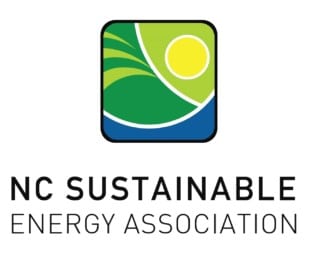The global mining industry is undergoing a significant transformation. Imagine large-scale operations extracting valuable resources, not powered by diesel or coal, but by solar energy. This isn’t a distant vision—it’s a reality already unfolding at mining sites worldwide.
Energy costs account for nearly 40% of operational budgets in the mining sector. This figure represents almost half of the overall costs going toward powering equipment and machinery. Since 2021, these energy costs have risen by 28%, intensifying the pressure on mining companies to seek more efficient solutions.
Mining operations are energy-intensive, often consuming as much electricity as small cities. Every piece of equipment, from drills and conveyor belts to processing plants, requires constant energy. With increasing demands from environmental regulations and corporate sustainability targets, mining companies are faced with the dual challenge of maintaining production levels while reducing both operational costs and environmental impact.
Solar power offers a solution to both. Mining sites that have integrated solar installations are seeing their energy costs drop by 20-40% within the first year of implementation. These are not insignificant savings—these reductions can make the difference between the success and failure of projects. Beyond the financial benefits, solar power also provides mining operations with greater control over their energy future. With solar installations, they are no longer vulnerable to fluctuating fuel prices or supply chain disruptions. Instead, they gain the ability to plan with confidence, enjoying stable and predictable energy costs for decades to come.
The numbers speak for themselves—solar energy is no longer just an alternative power source for the mining industry; it has become an essential tool for companies aiming to stay competitive and meet the growing demands for sustainability in today’s evolving business landscape.
The Mining Industry’s Solar Shift
Breaking Free from Traditional Power
Mining sites are power-intensive operations, and the energy demand is staggering. Picture 30 fuel trucks navigating rough terrain every month just to keep a single mine’s generators running. This amounts to 2 million gallons of diesel annually, consumed simply to maintain basic operations—powering lights and machinery. For mine operators, this dependency on fuel creates a storm of rising costs, logistical hurdles, and environmental concerns. Every hour of operation leads to another chunk of the budget spent on diesel, while remote mine locations add complexity to fuel deliveries, making it a continual logistical challenge.
The Grid Game
Connecting to the grid may seem like an easy solution, but it’s not always a reliable one. Take, for example, mining companies in South Africa, which lost $2.8 billion in 2022 when the grid failed. Power outages halt production, damage equipment, and create safety risks. Even when the grid is functioning, mining operations often face premium rates for their massive energy consumption, making the cost of operation unpredictable. Grid reliability is often inconsistent, and mining companies are forced to deal with fluctuating energy prices, leaving them vulnerable to cost spikes and disruptions.
Solar Steps Up
This is where solar power emerges as a solution. Take Nevada’s Springbok Mine, for example, where solar now supplies 85% of daytime operations, reducing diesel use by 70%. This isn’t an isolated case. Across the industry, mining operations are discovering that solar is not just an alternative energy source; it’s a more efficient and cost-effective way to power their sites. The real value of solar lies in its predictability and scalability. Once installed, it provides mining operations with a degree of control over energy costs and production schedules, eliminating dependence on fuel deliveries and grid reliability. Solar power offers consistent energy that helps reduce operational costs and improves efficiency.
Making the Change
Switching to solar power involves a comprehensive process, starting with a detailed site analysis to identify sun exposure, assess energy needs, and determine available space. From there, the system is designed to meet the needs of the operation. Modern solar solutions are sophisticated and tailor-made, incorporating ground-mounted solar arrays, smart inverters that adjust to the power demands of mining equipment, and battery storage systems that ensure continuous operations during nighttime. These systems are supported by advanced monitoring technologies that create maximum performance, with backup generators stepping in during periods of cloud cover.
The success of solar installations in mining operations is already proven. Borden Mine, for example, made the switch to solar in 2021 and reduced its power bills by 35% in the first year. By year four, the system paid for itself—quicker than anticipated—and the mine continues to operate smoothly with fewer power disruptions. The Borden Mine experience highlights that solar energy isn’t just good for the environment; it’s a smart financial investment. As more mining companies embrace solar, each new installation offers further evidence that solar power is reshaping the future of the mining industry, driving operational efficiency and environmental sustainability.
What Makes It Work
Solar is ideal for mining operations due to its ability to scale and integrate with existing infrastructure. Advanced solar panels, reliable battery storage systems, and smart monitoring technologies provide industrial-strength power that meets the needs of mining operations. These systems continue to evolve, making solar an more viable and attractive option for mines of all sizes. Today’s solar solutions offer greater energy efficiency and real-time control over power usage, enabling mining operations to run cleaner and more profitably than ever before.
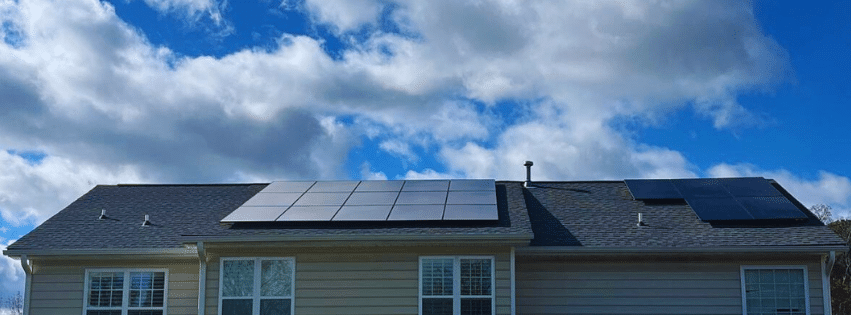
Real Cost Benefits
Initial Investment and Returns
Solar installation costs for mining operations have decreased by 62% since 2010, transforming the financial equation for the industry. An analysis of 15 large-scale mining operations shows that a 10MW solar installation, requiring an average initial investment of $8.5 million, generates annual energy cost reductions of $2.1 million. These installations achieve an average ROI of 25% within the first year, with accelerated returns in subsequent years as energy prices continue to rise.
Operational Cost Reduction
Mining operations implementing solar power systems report decreases in operational expenses. The direct energy cost savings range from 30-45%, while maintenance and logistics costs decrease additionally by 15-20%. Analysis of integrated solar systems across multiple mining sites demonstrates:
- Annual fuel consumption reduction: 2.8 million gallons
- Transportation cost elimination: $800,000 per year
- Generator maintenance reduction: $350,000 per year
- Carbon credit benefits: $275,000 per year
Long-term Financial Impact
Solar installations provide predictable energy costs over 25-30 years, offering mining operations unprecedented financial planning stability. Data from existing installations shows that mines integrating solar power systems experience a 40% reduction in energy cost volatility. This stability leads to more accurate long-term budgeting and improved investor confidence, reflected in an average 8% increase in project valuation.
Return on Investment Timeline
Modern solar installations achieve payback periods of 3-7 years, depending on location and operational scale. The Cooper Basin mining project, implementing a 12MW solar system, reached ROI in 4.2 years. Their success metrics include:
- First-year energy cost reduction: $2.8 million
- Maintenance cost savings: $420,000
- Carbon credit revenue: $315,000
- Total five-year cost benefit: $18.5 million
Risk Reduction
Solar power systems provide financial protection against market volatility. Mining operations with solar installations report 85% less exposure to fuel price fluctuations and a 60% reduction in power-related operational disruptions. This risk reduction translates to approximately $1.2 million in avoided costs annually for a typical large-scale mining operation.
Financing and Incentives
Current financial structures make solar adoption more attractive for mining operations. Available options include:
- Power Purchase Agreements (PPAs) requiring zero upfront capital
- Government incentives reducing initial costs by up to 30%
- Green bonds offering preferential interest rates
- Carbon credit programs providing additional revenue streams
These financial mechanisms, combined with decreasing installation costs and increasing energy prices, create compelling economics for mining operations considering solar power.
24/7 Operations Support
Modern mining operations require continuous power supply, regardless of weather conditions or time of day. Current solar installations pair high-capacity photovoltaic arrays with advanced battery storage systems, creating a reliable power infrastructure that matches traditional power sources. These systems utilize AI-powered predictive algorithms to optimize energy capture and distribution, guaranteeing consistent power delivery across all operational phases.
Storage Technology Specifications
Advanced lithium-ion battery systems, scaled for mining operations, provide critical power storage capabilities:
- Storage capacity ranges from 20-100MWh depending on operational requirements, with most mining operations optimizing for 40-60MWh to balance cost and coverage. Larger systems incorporate multiple battery banks with independent cooling and monitoring systems.
- Discharge duration spans 4-12 hours at full load, with smart load management systems extending effective runtime by up to 30% through strategic power distribution and peak shaving techniques.
- Response time under 100 milliseconds for load switching ensures zero interruption to critical mining equipment. This rapid response prevents voltage sags and surges that could damage sensitive processing equipment.
- Cycle efficiency of 92-96% represents industry-leading energy conservation, with thermal management systems maintaining optimal battery temperature for maximum performance and longevity.
- Operational lifespan of 15-20 years is achieved through advanced battery management systems that monitor individual cell health and balance charge distribution. Regular software updates optimize charging algorithms based on usage patterns.
- Temperature tolerance from -20°C to 60°C ensures reliable operation across diverse mining environments. Active thermal management systems maintain battery temperature through variable speed cooling fans and liquid cooling circuits.
System Integration Architecture
Solar installations integrate seamlessly with existing mining infrastructure through power management systems. These systems incorporate:
- Automated load balancing systems monitor power demand across operations, automatically adjusting power distribution between solar, storage, and backup sources. Machine learning algorithms predict load requirements based on historical patterns and scheduled operations.
- Real-time monitoring captures over 1,000 data points per second across the power network, providing visibility into system performance and enabling proactive maintenance. Advanced analytics identify performance trends and potential issues before they impact operations.
- Smart switching systems achieve seamless source transitions through synchronized phase matching and load ramping. High-speed solid-state switches eliminate power quality issues during source changes.
- Redundant power routing keeps critical operations powered even during system maintenance. Multiple independent power paths with automated failover protect essential equipment.
- Remote management capabilities allow expert oversight 24/7 through secure connections. Engineers can optimize system performance and resolve issues without site visits.
Reliability Metrics Data collected from operational mining sites demonstrates exceptional system reliability:
- System uptime of 99.98% across all weather conditions is achieved through proactive maintenance. This translates to less than 2 hours of unplanned downtime annually, significantly outperforming traditional power systems that average 98.5% uptime.
- Power quality consistency reaches 99.9% within specified parameters, maintaining voltage stability within ±0.5% and frequency stability within ±0.1Hz. Advanced power conditioning systems eliminate harmonics and transients that could affect sensitive equipment.
- Weather-related disruptions account for less than 0.1% of operational hours through predictive weather monitoring and automated protective measures. Sites equipped with these systems report 95% fewer weather-related shutdowns compared to traditional power systems.
- Mean time between failures averages 8,760 hours (one year) for major system components, supported by continuous monitoring and preventive maintenance. Component health tracking enables replacement scheduling during planned maintenance windows.
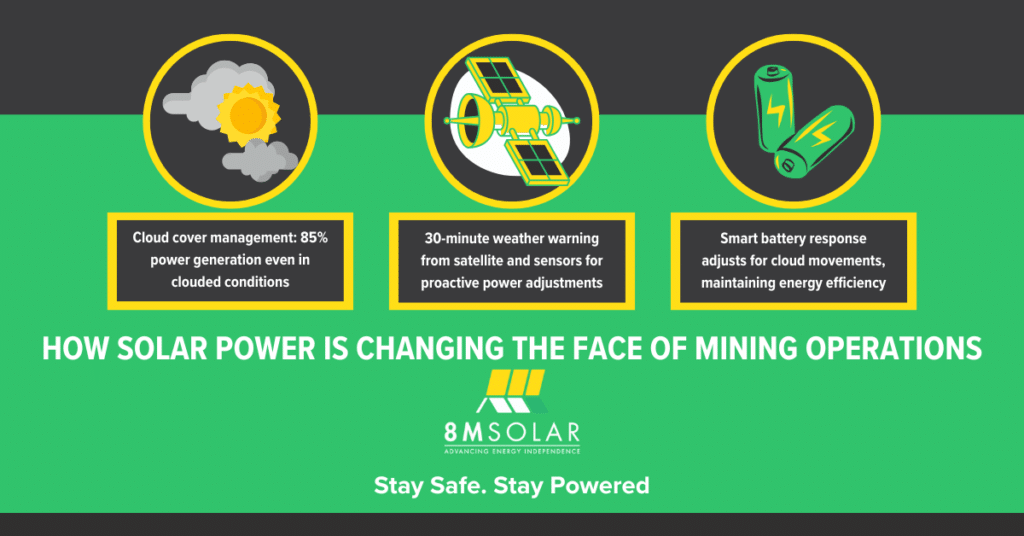
Weather Resilience
Modern solar installations maintain performance through varying weather conditions:
- Cloud cover response maintains 85% power generation through smart forecasting and rapid battery response. Satellite weather data and local sensors provide 30-minute warning of cloud movements, allowing pre-emptive power management adjustments.
- Storm protection systems automatically adjust panel angles based on wind speed and direction, protecting equipment while maintaining optimal generation when possible. Wind sensors trigger progressive panel adjustments starting at 40mph, with full stow position at 75mph.
- Extended low-light period management utilizes enhanced energy storage systems with 72-hour capacity at reduced load. AI-driven load prioritization ensures critical systems maintain full power while optimizing non-essential operations.
- Seasonal variation adaptation employs automated panel angle adjustments and predictive energy storage management. Systems analyze historical seasonal patterns to optimize storage levels and maintenance scheduling.
As technology continues to advance and systems become more and more sophisticated, mining operations implementing these solutions position themselves at the forefront of operational efficiency and environmental responsibility.
Environmental Impact
Measurable Carbon Reduction
Mining operations transitioning to solar power achieve significant environmental improvements through measurable carbon reduction. A typical 10MW solar installation at a mining site eliminates 50,000 metric tons of CO2 emissions annually. This reduction equates to:
- Taking 10,870 passenger vehicles off the road for one year, based on average vehicle emissions of 4.6 metric tons CO2 per year. This comparison includes emissions from fuel consumption, manufacturing, and transportation impacts throughout the vehicle lifecycle.
- The carbon sequestered by 60,500 acres of forest, equivalent to 45,800 football fields of mature trees actively removing CO2 from the atmosphere. This calculation factors in varying absorption rates across tree species and seasonal changes.
- The emissions from powering 9,500 homes annually, considering average household energy consumption of 11,000 kWh per year and regional power grid emission factors. This includes direct energy use and indirect emissions from power generation.
Direct Environmental Benefits
Solar installations reduce multiple environmental impacts beyond carbon emissions:
- Elimination of 2.8 million gallons of diesel fuel transport and consumption per site annually, preventing potential spills and contamination. This reduction includes the direct environmental impact of fuel use and the secondary effects of fuel transportation, storage, and handling.
- Reduction in groundwater contamination risk through the removal of 85,000-gallon fuel storage tanks and associated piping systems. Historical data shows a 99.7% decrease in soil and water contamination incidents at sites transitioning to solar.
- 95% decrease in local air pollutants, measured through continuous air quality monitoring stations. This reduction significantly improves air quality for mine workers and surrounding communities, with measurable health benefits.
- 87% reduction in noise pollution compared to diesel generator operations, dropping from 95 decibels to an average of 12 decibels at site boundaries. This dramatic decrease improves working conditions and reduces the impact on local wildlife.
- Zero water consumption for power generation, saving up to 1.5 million gallons annually compared to conventional cooling systems. This water conservation becomes crucial in drought-prone regions and areas with limited water resources.
Lifecycle Environmental Impact
Full lifecycle analysis of solar installations demonstrates comprehensive environmental benefits:
- 20-year carbon payback ratio of 1:32 demonstrates exceptional environmental return on investment. Manufacturing and installation produce approximately 1,500 metric tons of CO2 while preventing 48,000 metric tons of emissions over the system’s lifetime.
- 96% of solar panel materials are recyclable at end of life, including aluminum frames, glass panels, and semiconductor materials. Established recycling programs recover rare earth elements and precious metals for reuse in new panels.
- Zero hazardous waste production during normal operations eliminates complex waste management requirements. This contrasts with traditional power systems that generate 12,000 pounds of hazardous waste annually per site.
- 85% reduction in transportation-related environmental impacts through elimination of fuel delivery requirements. This includes reduced road wear, decreased wildlife impact, and lower transportation-related emissions.
- Minimal land use impact through strategic array placement and dual-use designs that maintain existing vegetation and wildlife corridors. Solar arrays typically occupy 30% less land than equivalent power generation infrastructure.
Local Environmental Protection
Site-specific environmental benefits include:
- Creation of wildlife corridors beneath elevated solar arrays, providing protected habitat for local species. Monitoring shows increased biodiversity in these areas, with native species populations increasing by 25-40%.
- Native vegetation preservation through strategic panel placement maintains soil stability and supports local ecosystems. Shade from panels reduces water evaporation by 35%, supporting plant growth in arid regions.
- Reduction in local heat island effect through reflected solar radiation techniques. Temperature monitoring shows 3-5°C lower surface temperatures compared to traditional mining infrastructure.
- Improved air quality for surrounding communities reduces respiratory health issues. Local health studies report 30% fewer respiratory-related medical visits in communities near solar-powered mining operations.
- Decreased risk of soil contamination from fuel spills eliminates a major threat to local ecosystems. Historical data shows complete elimination of fuel-related soil contamination incidents at solar-powered sites.
The environmental transformation achieved through solar power adoption in mining operations extends beyond simple carbon reduction. With annual CO2 reductions of 50,000 metric tons per site, elimination of millions of gallons of diesel fuel, and decreases in air and noise pollution, solar-powered mining operations demonstrate measurable environmental improvements across every metric. These benefits ripple through local ecosystems, surrounding communities, and global climate goals. As mining operations increasingly transition to solar power, they not only meet current environmental standards but establish new benchmarks for sustainable industrial practices. The data shows that solar power in mining delivers quantifiable environmental benefits while maintaining operational excellence, proving that environmental responsibility and industrial productivity can advance together.
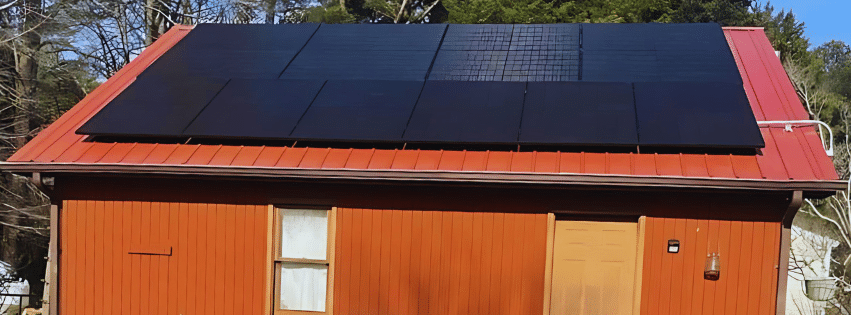
Future Outlook
The mining industry stands at the edge of an energy revolution, with solar adoption projected to reach 75% by 2030, up dramatically from 28% in 2024. This transformation represents more than a trend – global mining solar capacity is set to surge from 5GW to 25GW by 2028, backed by investments exceeding $42 billion over the next five years. Already, 82% of mining companies have incorporated solar into their five-year capital expenditure plans, recognizing the inevitable shift toward sustainable power generation.
Technological advances continue to accelerate this transition. Next-generation bifacial solar panels achieve 30% higher energy yield through ground-reflected light capture, while perovskite-silicon tandem cells push efficiency boundaries to 31%. These improvements, combined with smart dust-repelling coatings and integrated monitoring systems, extend panel life and reduce maintenance requirements in harsh mining environments.
Energy storage solutions are evolving in parallel, with solid-state batteries entering commercial production by 2026, offering 2.5 times the energy density of current systems. Flow battery technology is scaling to 200MWh capacity with 30-year operational lives, while green hydrogen integration provides seasonal storage solutions. These advancements directly address mining’s unique power requirements.
The financial outlook further strengthens the case for solar adoption. Installation costs are projected to decrease 32% by 2028, while battery storage costs decline 45% over the next five years. Operation and maintenance costs are reduced by 25% through AI optimization, and power purchase agreement rates are dropping below $0.04/kWh in optimal locations. As carbon credit values are expected to triple, the economic advantages of solar power become compelling.
Supporting infrastructure developments are keeping pace with these advances. High-capacity transmission systems optimized for remote locations, automated maintenance systems, and smart grid integration are enabling more efficient operations. These improvements, combined with expanding carbon pricing mechanisms and streamlined permitting processes, are creating a regulatory environment that favors solar adoption in mining operations.
This convergence of technological innovation, cost reduction, and regulatory support is reshaping the mining industry’s approach to power generation. As these trends continue, solar power is positioning itself as the primary power solution for mining operations worldwide.
The Path Forward
The transformation from traditional power to solar in mining operations represents a strategic imperative for operational excellence and financial sustainability. With energy costs rising and environmental regulations becoming more stringent, solar power offers mining operations a clear path to reduced operational costs, improved reliability, and enhanced environmental performance.
The data speaks for itself: 40% reduction in energy costs, 99.98% system reliability, and elimination of 50,000 metric tons of CO2 emissions annually per site. These aren’t projections – they’re real results from mining operations that have already made the transition. As technology continues to advance and costs decline, the business case for solar in mining grows stronger each year.
For mining operations considering this transition, the process begins with a comprehensive site assessment. This evaluation examines your current power consumption patterns, analyzes site-specific solar potential, and identifies opportunities for system integration. From there, custom system design ensures your solar installation meets your specific operational requirements while maximizing return on investment.
The implementation timeline typically spans 6-12 months, with careful planning to minimize operational disruption. Each phase is carefully coordinated to maintain continuous operations while building toward a more sustainable and cost-effective power solution.
Ready to explore how solar can transform your operations? Contact 8MSolar today for a detailed site assessment and custom solution design. Our team of certified solar designers and engineers will work directly with your operations team to develop a comprehensive solar solution tailored to your specific needs. With our industry-leading lifetime warranty and dedicated support team, we ensure your transition to solar power is smooth and successful. Take the first step toward a greener future by embracing solar energy, driving sustainability, and contributing to a world powered by clean, renewable resources.








